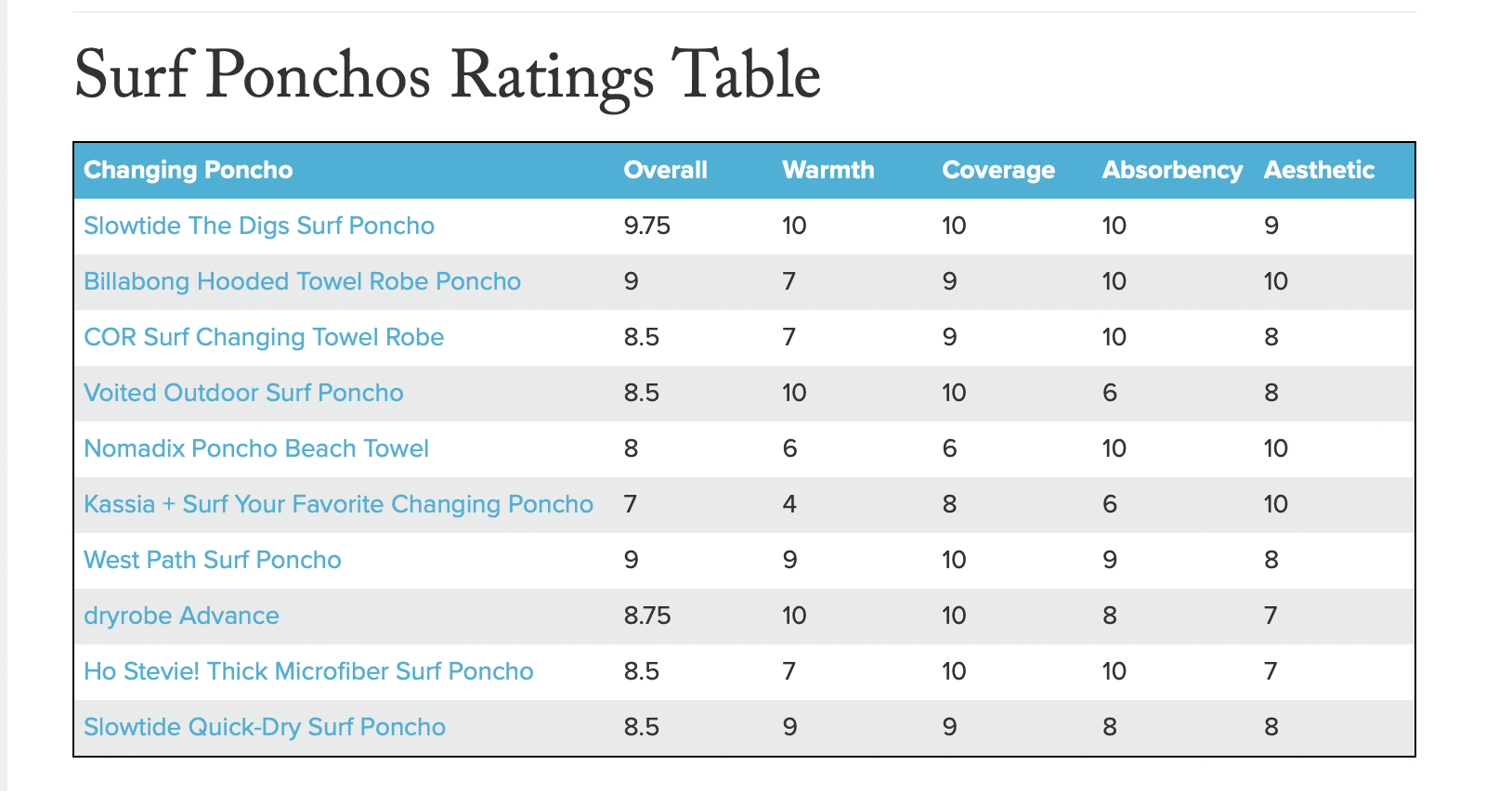“I’m proper upset,” says Chas Smith
Are you, like me, a naturist at heart? A firm believer in the notion that there’s no such thing as bad nudity?
And that the ugly and the old have a sensuality that is unique and magnificent even if it is often accompanied by the faint lingering odour of urine?
Over the course of the past, I don’t know exactly how long, five years maybe, a grim trend has crept into the modern surf culture.
While we were all distracted by the vulnerable adult learner, in came the surf poncho, a shawl made of terry towelling to protect the world from the evil of nudity.
Recently, The Inertia reviewed a series of surf ponchos, with helpful graphics and important notes.
See below.

Very good advice followed:
Warmth: Our tester tends to run cold, so she’s always looking for something warm to throw on after a chilly surf. When she’s not using it for changing, she’s definitely been known to hang in her surf poncho on the beach and has maybe even popped into the grocery store once or twice in it. Maybe. If you live in a warmer region and strictly plan on using your poncho for changing, warmth won’t carry as much weight for you.
Coverage: If you plan on changing in it, you want a robe that’s going to keep you covered so you’re not flashing everyone in the parking lot. Our tester likes a robe that’s big enough that she can reach under it to take off her suit and goes to at least mid-thigh so she’s fully covered. It can often be worth sizing up if the poncho you choose has different sizes and you’re going to use it as a changing robe.
Absorbency: Our tester tends to have my surf poncho double as a towel, so it’s nice if it absorbs water well. Oftentimes, the robes are made out of towel material, which is perfect in her book since she’s guilty of regularly forgetting a towel. However, some of the insulated options on this list make use of microfiber linings, which aren’t quite as good for toweling off.
Aesthetic : While it’s certainly not essential for function, we want a surf robe/poncho that looks cool — if there is such a thing. Some may prefer solids but our tester is all about fun prints or something that sets it apart.
In the video below, Chas Smith, who hates surfing, describes the surf poncho as “an assault on fashion, on surfing and common decency.”





